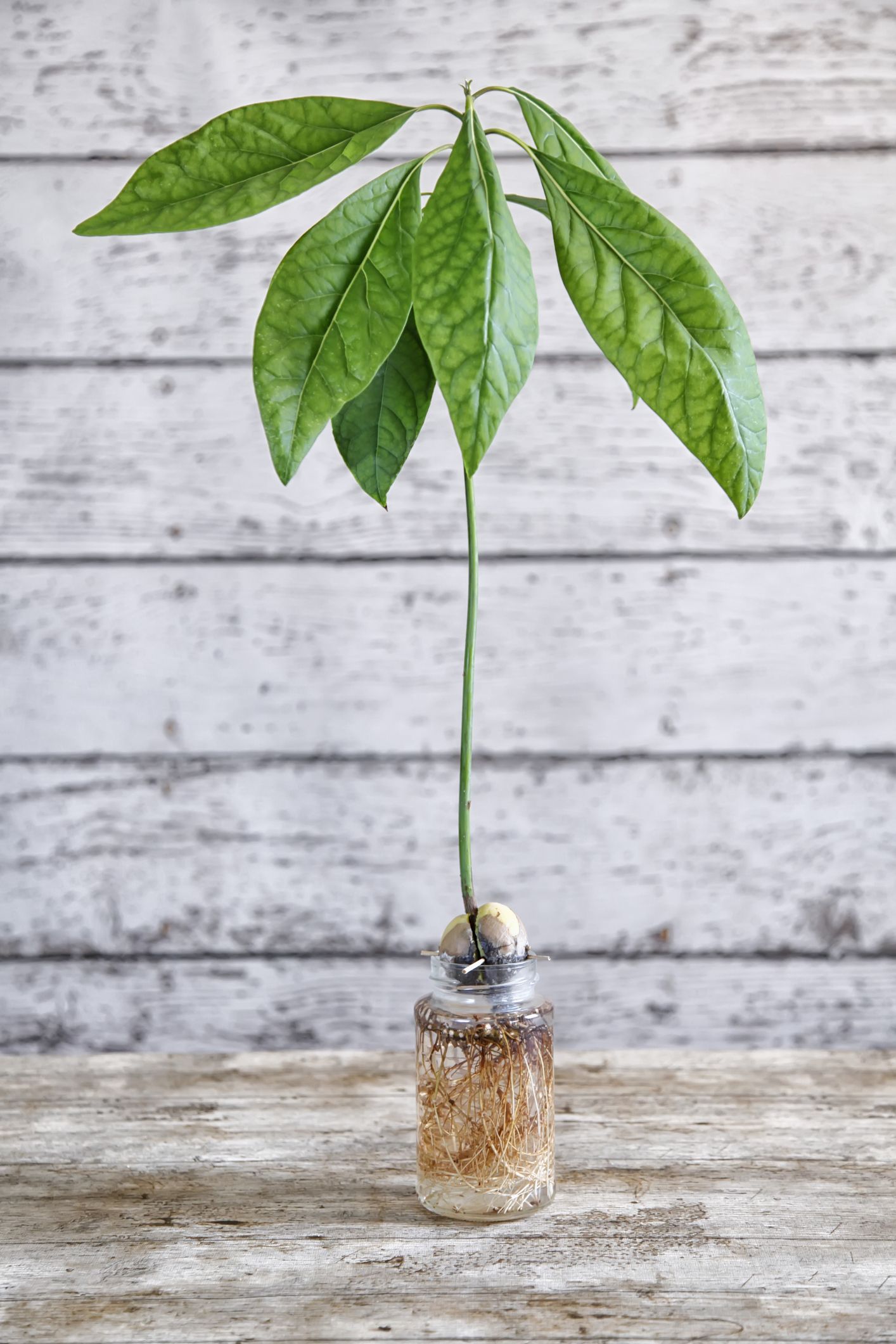Propagation
Growing an avocado tree from a pip suspended over a container of water is fun,
but trees grown this way can take from seven to 15 years to produce fruit,
as opposed to grafted trees which take about two years. Trees grown in this way do,
however, make lovely indoor container plants if placed in good light. For trees for fruit,
it is best to buy grafted trees from nurseries.
If you are determined to grow at least one tree from seed try to obtain seed from an old avocado
tree that was itself grown from seed.
Suitable climates
Avocados grow best in high-rainfall areas, near the coast, or where no frost occurs.
They will grow in cooler areas but the fruit will take longer to ripen.
The Fuerte cultivar - which is the most popular variety in South Africa has a wide climate tolerance
and can survive temperatures of -4°C, but it will not tolerate frost when flowering.
Hot, dry conditions cause the flowers and fruit to drop resulting in lower yields.
All avocado cultivars can be stressed from lack of water so they will need irrigation (especially during flowering)
in areas with rainfall of less than 1000 mm annually.
Growth habit
Avocado trees grow to a large size so plant the tree at least 7 m away from any other tree.
Avocados have a very sensitive root system that will rot if there is too much water in the soil.
It is therefore essential to have soil that drains well.
A healthy tree has a root system that can penetrate the soil to a depth of 1 m.
Plant the trees in a warm, sunny area that is sheltered from the wind, in rich well-composted soil.
They will need regular watering until they are established. Do not apply any fertilizer in the first year,
the trees must first become well established and grow vigorously.
During the second year and yearly after that give each tree a good helping of kraal manure.
Fertilizer (3:1:5) can be applied in July, December, and April.
Fertilizer and mulch must be kept away from the stem of the tree to avoid collar rot.
Useful tip
Try this if a tree stops bearing fruit after about six years of producing.
Dig a trench 900 mm deep by 500 mm wide a meter from the tree (or 1.5 meters if the tree is more than 10 years old).
Sever the roots you come across as you dig.
Fill the trench with water and wait for it to drain away before refilling it with new composted soil.
This rejuvenates the tree and restores the balance between the top growth and the root system.
Pruning
Avocado trees do not need to be pruned or thinned out, except to remove dead or unwanted branches.
As some cultivars grow very tall it may be necessary to cut off the tops of the main branches.
This makes the tree branch out instead, which makes the fruit accessible.
Pollination
Avocado trees require the transfer of pollen from one flower to another for pollination to occur, which is best done by bees.
Some cultivars require the pollen of another cultivar for fertilization to take place,
but cultivars such as Fuerte and Hass are self-compatible (and so can be pollinated from the same cultivar).
Harvesting
The individual avocadoes only ripen fully after they are removed from the tree.
To check if they are ready, pick a few of the biggest, best-shaped specimens and keep them indoors.
If, after eight to 10 days, they do not shrivel up and they are soft and edible then you can begin harvesting.
Fruit uses
Avocado is a truly remarkable fruit that is glorious when halved and eaten straight out of the skin with a spoon.
Its creamy, gentle flavor makes it ideal for mixing with the robust flavors of ingredients such as chilies, pepper,
coriander, and lemon. Avocado trees are sometimes called 'guacamole trees' after the avocado-based dish that originated in Mexico,
but avocado is now used in just about every country in the world. It is made into ice cream, is used to flavor liqueurs,
is used in Japanese sushi, and is even made into milkshakes in Indonesia.
Interesting fact
Although avocados have a high-fat content they can be part of a successful weight management program because the monounsaturated
oil they contain is believed to speed up the body's metabolic rate.
They are also rich sources of vitamins such as A, B6, E, and C and minerals such as potassium and magnesium.



